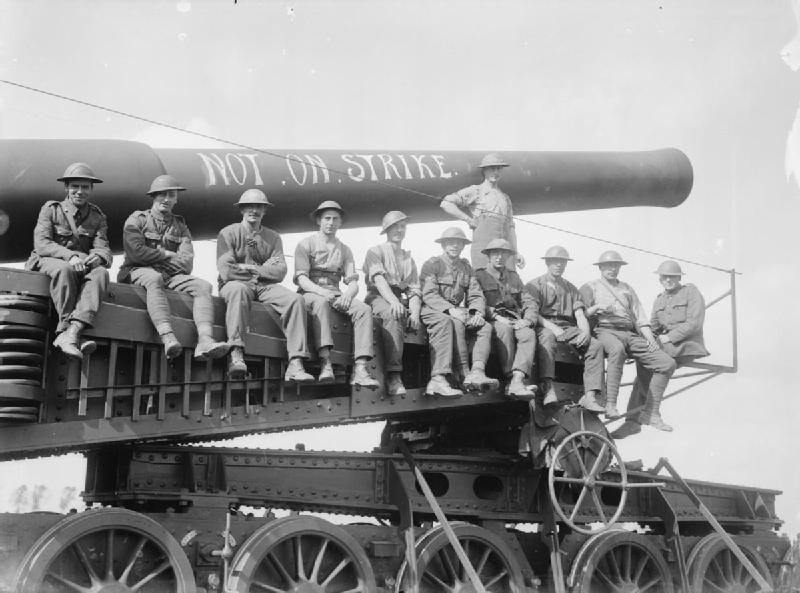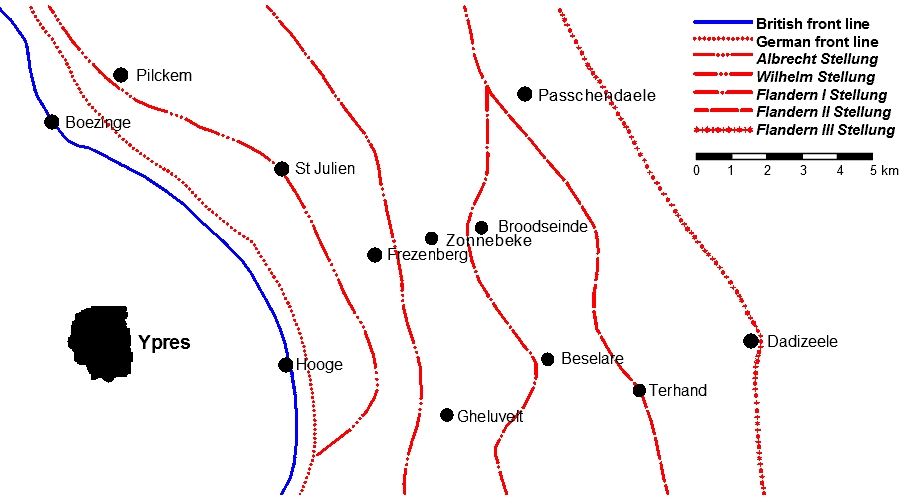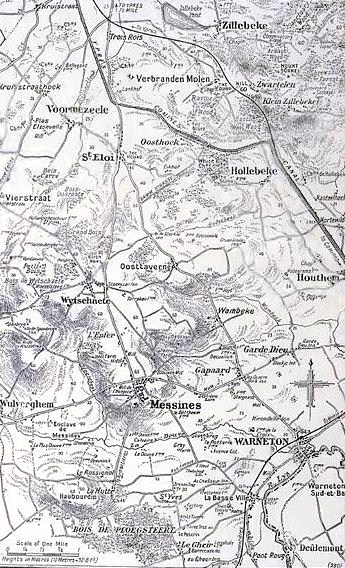|
Second Battle Of Passchendaele
The Second Battle of Passchendaele was the culminating attack during the Third Battle of Ypres of the First World War. The battle took place in the Ypres Salient area of the Western Front, in and around the Belgian village of Passchendaele, between 26 October and 10 November 1917. The Canadian Corps relieved the exhausted II Anzac Corps, continuing the advance started with the First Battle of Passchendaele and ultimately capturing the village. Beyond gaining favourable observation positions, the battle was intended to gain drier winter positions on higher ground. The assault position was directly south of the boundary between the British Fifth and Second Armies. The Canadian Corps was to attack with support of formations from the British Fifth Army to the north and the I Anzac Corps and X Corps to the south. The offensive was executed in a series of attacks with limited objectives, delivered at intervals of three or more days. The dates of the phases were tentatively given as ... [...More Info...] [...Related Items...] OR: [Wikipedia] [Google] [Baidu] |
Third Battle Of Ypres
The Third Battle of Ypres (; ; ), also known as the Battle of Passchendaele ( ), was a campaign of the First World War, fought by the Allies against the German Empire. The battle took place on the Western Front, from July to November 1917, for control of the ridges south and east of the Belgian city of Ypres in West Flanders, as part of a strategy decided by the Entente at conferences in November 1916 and May 1917. Passchendaele lies on the last ridge east of Ypres, from Roulers (now Roeselare), a junction of the Bruges-(Brugge)-to-Kortrijk railway. The station at Roulers was on the main supply route of the German 4th Army. Once Passchendaele Ridge had been captured, the Allied advance was to continue to a line from Thourout (now Torhout) to Couckelaere ( Koekelare). Further operations and a British supporting attack along the Belgian coast from Nieuport ( Nieuwpoort), combined with an amphibious landing ( Operation Hush), were to have reached Bruges and then the Dutch fr ... [...More Info...] [...Related Items...] OR: [Wikipedia] [Google] [Baidu] |
Second Army (United Kingdom)
The British Second Army was a Field Army active during the First and Second World Wars. During the First World War the army was active on the Western Front throughout most of the war and later active in Italy. During the Second World War the army was the main British contribution to the Normandy landings on 6 June 1944 and advance across Europe. First World War The Second Army was part of the British Army formed on 26 December 1914, when the British Expeditionary Force was split in two due to becoming too big to control its subordinate formations. The army controlled both III Corps and IV Corps. Second Army spent most of the war positioned around the Ypres salient, but was redeployed to Italy as part of the Italian Expeditionary Force between November 1917 and March 1918. In 1919 it was reconstituted as the British Army of the Rhine.Edmonds (1987) Commanders * 1914–1915 General Sir Horace Smith-Dorrien * 1915–1917 General Sir Herbert Plumer * 1917–1918 General Si ... [...More Info...] [...Related Items...] OR: [Wikipedia] [Google] [Baidu] |
Battle Of Menin Road
A battle is an occurrence of combat in warfare between opposing military units of any number or size. A war usually consists of multiple battles. In general, a battle is a military engagement that is well defined in duration, area, and force commitment. An engagement with only limited commitment between the forces and without decisive results is sometimes called a skirmish. The word "battle" can also be used infrequently to refer to an entire operational campaign, although this usage greatly diverges from its conventional or customary meaning. Generally, the word "battle" is used for such campaigns if referring to a protracted combat encounter in which either one or both of the combatants had the same methods, resources, and strategic objectives throughout the encounter. Some prominent examples of this would be the Battle of the Atlantic, Battle of Britain, and the Battle of France, all in World War II. Wars and military campaigns are guided by military strategy, whereas batt ... [...More Info...] [...Related Items...] OR: [Wikipedia] [Google] [Baidu] |
Battle Of Langemarck (1917)
The Battle of Langemarck (16–18 August 1917) was the second Anglo-French general attack of the Third Battle of Ypres, during the First World War. The battle took place near Ypres Salient, Ypres in Belgian Flanders, on the Western Front (World War I), Western Front against the German 4th Army (German Empire), 4th Army. The French First Army (France), First Army had a big success on the northern flank from Bixschoote to Drie Grachten (Three Canals) and the British gained a substantial amount of ground northwards from Saint-Julien, Langemark, St Julien to the boundary with the French. The attack on the Gheluvelt Plateau on the right (southern) flank captured a considerable amount of ground but failed to reach its objectives. German counter-attacks recaptured most of the lost territory during the afternoon. The weather prevented much of the British programme of air co-operation with the infantry, which had made it easier for German reserves to assemble on the battlefield. An unusu ... [...More Info...] [...Related Items...] OR: [Wikipedia] [Google] [Baidu] |
Battle Of Pilckem Ridge
The Battle of Pilckem Ridge (31 July – 2 August 1917) was the opening attack of the Third Battle of Ypres in the First World War. The British Fifth Army (United Kingdom), Fifth Army, supported by the Second Army (United Kingdom), Second Army on the southern flank and the French (First Army) on the northern flank, attacked the German 4th Army (German Empire), 4th Army, which defended the Western Front (World War I), Western Front from Lille northwards to the Ypres Salient in Belgium and on to the North Sea coast. On 31 July, the Anglo-French armies captured Pilckem (Flemish dialects, Flemish: Pilkem) Ridge and areas on either side, the French attack being a great success. After several weeks of changeable weather, heavy rain fell during the afternoon of 31 July. In the XIX Corps (United Kingdom), XIX Corps area in the centre and on the right of XVIII Corps (United Kingdom), XVIII Corps, three reserve brigades advanced from the black line to the main objective (green line) and p ... [...More Info...] [...Related Items...] OR: [Wikipedia] [Google] [Baidu] |
Battle Of Messines (1917)
The Battle of Messines (7–14 June 1917) was an attack by the British Second Army (General Sir Herbert Plumer), on the Western Front, near the village of Messines ( Dutch: Mesen) in West Flanders, Belgium, during the First World War. The Nivelle Offensive in April and May had failed to achieve its more grandiose aims, had led to the demoralisation of French troops and confounded the Anglo-French strategy for 1917. The attack forced the Germans to move reserves to Flanders from the Arras and Aisne fronts, relieving pressure on the French. The British tactical objective was to capture the German defences on the ridge, which ran from Ploegsteert Wood (Plugstreet to the British) in the south, through Messines and Wytschaete to Mt Sorrel, depriving the German 4th Army of the high ground. The ridge gave commanding views of the British defences and back areas of Ypres to the north, from which the British intended to conduct the Northern Operation, an advance to Passchendaele ... [...More Info...] [...Related Items...] OR: [Wikipedia] [Google] [Baidu] |
4th Army (German Empire)
The 4th Army () was an army level command of the German Army in World War I. It was formed on mobilisation in August 1914 from the VI Army Inspection. The army was disbanded in 1919 during demobilization after the war. History At the outset of war, the 4th Army, with the 5th Army, formed the center of the German armies on the Western Front, moving through Luxembourg and Belgium in support of the great wheel of the right wing that was to pin down and defeat the French armies. The 4th Army defeated Belgian forces on the frontier, drove the French out of the Ardennes and then encountered the British Expeditionary Force in the "Race to the Sea" at the First Battle of Ypres. The 4th Army faced the British in Flanders for the rest of the war, notably defending in the Battle of Passchendaele (1917), attacking in the 1918 German spring offensive and finally being pushed back in the Hundred Days Offensive from August 1918. At the end of the war it was serving as part of '' Heeresg ... [...More Info...] [...Related Items...] OR: [Wikipedia] [Google] [Baidu] |
Douglas Haig
Field marshal (United Kingdom), Field Marshal Douglas Haig, 1st Earl Haig (; 19 June 1861 – 29 January 1928) was a senior Officer (armed forces), officer of the British Army. During the First World War he commanded the British Expeditionary Force (World War I), British Expeditionary Force (BEF) on the Western Front (World War I), Western Front from late 1915 until the end of the war.Sheffield 2002, p. 21.Sheffield 2002, p. 263.Hart 2008, p. 2. Haig's military career included service in the War Office, where he was instrumental in the creation of the Territorial Force in 1908. In January 1917 he was promoted to the rank of Field marshal (United Kingdom), Field Marshal, subsequently leading the BEF during the final Hundred Days Offensive. This campaign, in combination with the Kiel mutiny, the Wilhelmshaven mutiny, the Proclamation of the republic in Germany, proclamation of a republic on 9 November 1918 and German revolution of 1918–1919, revolution across Germany, led to the ... [...More Info...] [...Related Items...] OR: [Wikipedia] [Google] [Baidu] |
Field Marshal
Field marshal (or field-marshal, abbreviated as FM) is the most senior military rank, senior to the general officer ranks. Usually, it is the highest rank in an army (in countries without the rank of Generalissimo), and as such, few persons are ever appointed to it. It is considered as a five-star rank (OF-10) in modern-day armed forces in many countries. Promotion to the rank of field marshal in many countries historically required extraordinary military achievement by a general (a wartime victory). However, the rank has also been used as a Division (military), divisional command rank and as a brigade command rank. Examples of the different uses of the rank include Afghanistan, Austria-Hungary, India, Pakistan, Prussia/Germany and Sri Lanka for an extraordinary achievement; Spain and Mexico for a divisional command (); and France, Portugal and Brazil for a brigade command (, ). Origins The origin of the term dates to the early Middle Ages, originally meaning the keeper of t ... [...More Info...] [...Related Items...] OR: [Wikipedia] [Google] [Baidu] |
Battle Of Cambrai (1917)
The Battle of Cambrai (Battle of Cambrai, 1917, First Battle of Cambrai and ''Schlacht von Cambrai'') was a British attack in the First World War, followed by the biggest German counter-attack against the British Expeditionary Force (BEF) since 1914. The town of Cambrai, in the département of Nord, in France, was an important supply centre for the German (known to the British as the Hindenburg Line) and capture of the town and the nearby Bourlon Ridge would threaten the rear of the German line to the north. Major General Henry Tudor, Commander, Royal Artillery (CRA), of the 9th (Scottish) Division, advocated the use of new artillery-infantry tactics on his sector of the front. During preparations, J. F. C. Fuller, a staff officer with the Tank Corps, looked for places to use tanks for raids. General Julian Byng, commander of the Third Army, decided to combine both plans. The French and British armies had used tanks en masse earlier in 1917, although to considerably ... [...More Info...] [...Related Items...] OR: [Wikipedia] [Google] [Baidu] |
Battle Of Caporetto
The Battle of Kobarid (also known as the Twelfth Battle of the Isonzo, the Battle of Caporetto or the Battle of Karfreit) took place on the Italian front of World War I. The battle was fought between the Kingdom of Italy and the Central Powers and took place from 24 October to 19 November 1917, near the town of Kobarid (now in north-western Slovenia, then part of the Austrian Littoral), and near the river Isonzo. The battle was named after the Italian name of the town (also known as ''Karfreit'' in German). Austro-Hungarian forces, reinforced by German units, were able to break into the Italian front line and rout the Italian forces opposing them. The battle was a demonstration of the effectiveness of the use of stormtroopers and the infiltration tactics developed in part by Oskar von Hutier. The use of poison gas by the Germans also played a key role in the collapse of the Italian Second Army. The rest of the Italian Army retreated to the Piave River; its effec ... [...More Info...] [...Related Items...] OR: [Wikipedia] [Google] [Baidu] |
Royal Italian Army
The Royal Italian Army () (RE) was the land force of the Kingdom of Italy, established with the proclamation of the Kingdom of Italy. During the 19th century Italy started to unify into one country, and in 1861 Manfredo Fanti signed a decree creating the Army of the Two Sicilies. This newly created army's first task was to defend its territorial gains against Legitimists in southern Italy, who remained loyal to Francis II of the Two Sicilies. The Army of the Two Sicilies also waged what many modern historians now consider a civil war against outlaws and Bourbonist guerrillas, such as the famous Michelina Di Cesare, and against other Italian states' armies during the continuing wars of unification. After the monarchy ended in 1946, the army changed its name to become the modern Italian Army (). Within the Royal Italian Army were the elite mountain military corporals, the Alpini. The Alpini, which remain in existence today, are the oldest active mountain infantry in the w ... [...More Info...] [...Related Items...] OR: [Wikipedia] [Google] [Baidu] |









